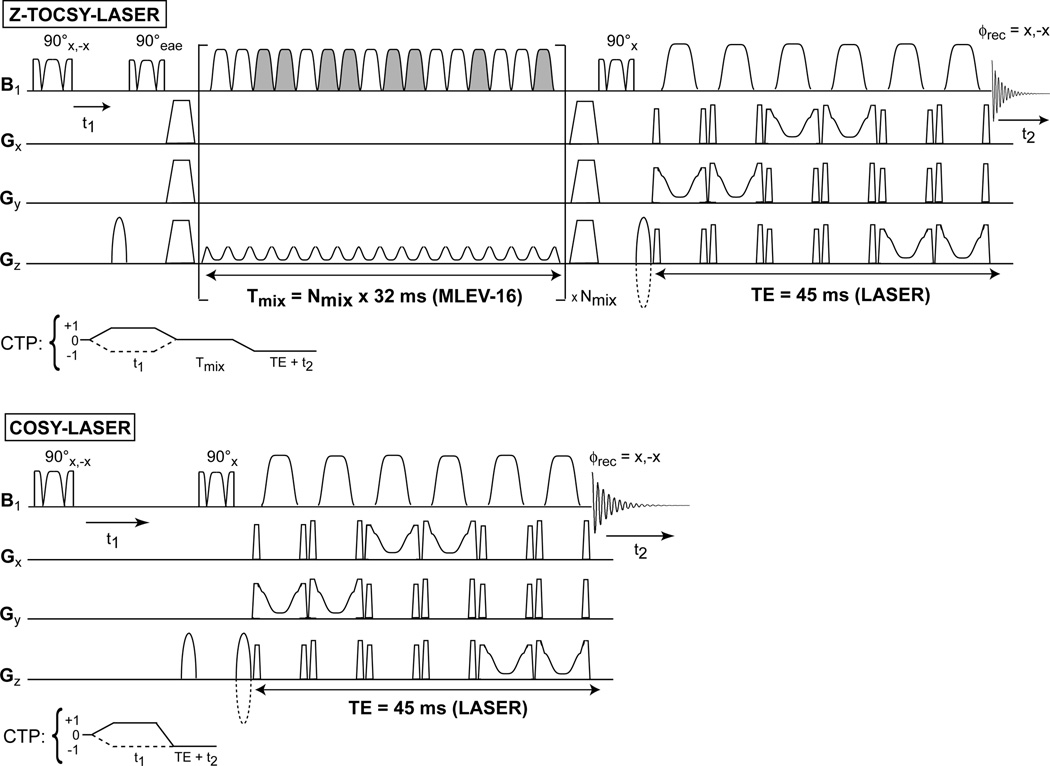Figure 1.
Fully adiabatic sequences for low-power in-vivo 2D TOCSY and 2D COSY experiments. The 2D Z-TOCSY-LASER experiment combines longitudinal TOCSY mixing and LASER localization, employing both the GOIA-W(16,4) pulses. A gradient enhanced z-filter, composed of 90° adiabatic BIR-4 pulses and spoilers (trapeze shape) that removes unwanted transverse magnetization, brackets the MLEV-16 block to perform transfer of longitudinal magnetization. The MLEV-16 block concatenates the individual GOIA-W(16,4) pulse shapes to eliminate gaps and can be repeated a number of times (Nmix) for the desired mixing time. The relative phase of the GOIA-W(16,4) pulses changes according to the MLEV-16 scheme (pulses which are grayed-out have an overall 180° phase shift compared to non-grayed pulses). The preferred gradient direction during MLEV-16 is selected for the gradient coil with the best performance. Sine-bell shaped gradients before and after the z-filtered MLEV-16 block select the coherence transfer pathway (CTP) depicted underneath the sequence. Echo-antiecho of 2D spectra can be performed if the phase (eae) of the first 90° pulse of the z-filter is alternated z to −x simultaneously with the change in polarity of the CTP gradient following the spoiler (the echo and antiecho FIDs are stored interleaved). The 2D COSY-LASER sequence is a simple extension of the LASER sequence with an additional 90° BIR-4 pulse, and sine-bell gradients to select the CTP depicted underneath the sequence (the polarity of CTP gradients can be alternated for interleaved echo-antiecho acquisitions). The t1 evolution time is incremented in successive experiments and a minimum two step phase cycle involving the first excitation pulse and the receiver phase can be used to remove t1 noise and axial peaks in both 2D spectra. 1D edited sequences can be simply obtained by replacing the first 90° BIR-4 pulse with a selective Gaussian pulse.

